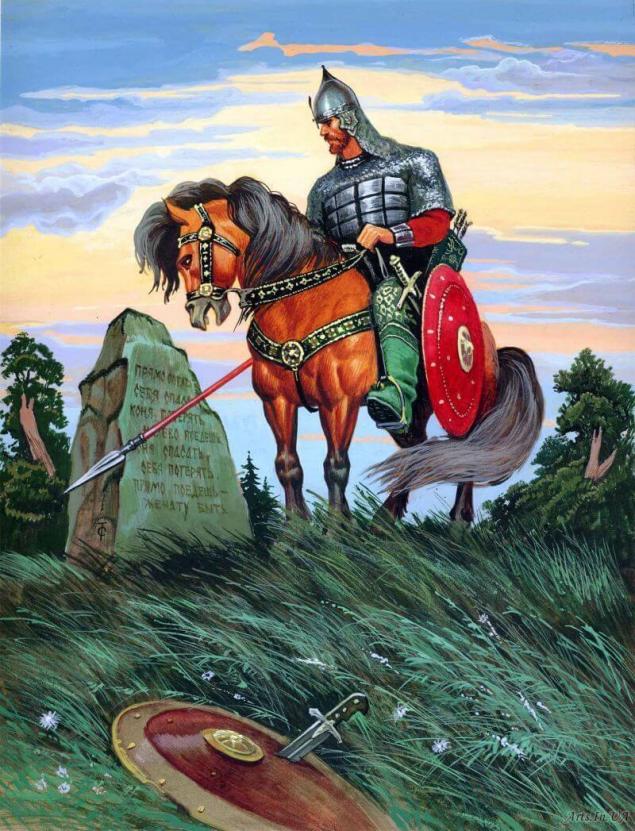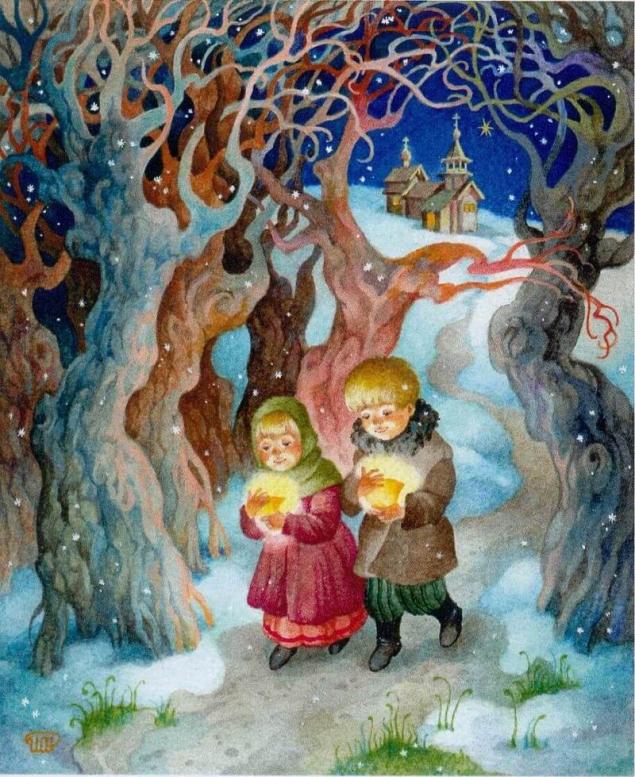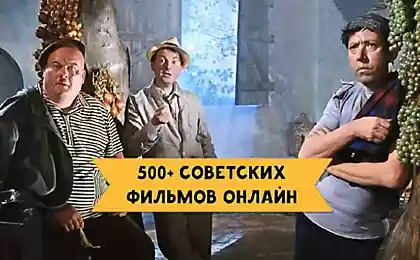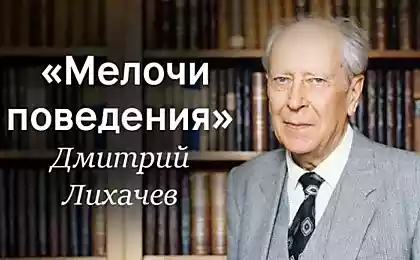603
Dmitry Solan: Therapy as a solution to psychological problems
A brief excursion into the use of fairy tale therapy to psychological analysis and holistic development.
I love fairy tales, — tales in the broadest sense, when the tale is any story, history is not confined reality of the consensus. That is, the tale is such a place, intertwined with rationality and irrationalism, mysticism and worldly wisdom, relationship with yourself and with other people.
The therapy method is not only of practical psychology, so I propose an integrated model that justifies the work of fairy tales and therapy on many levels, and at the same time — not only for analysis but also for developing and transformation, where the goal is not only to heal through awareness or changes, but also to see and where to go next.

If you take over base this common definition of the psychological problems that the problem is an internal conflict between two or more parts, and wherein at least one of them is unconscious, an unconscious level, there is, by and large, only two ways to solve any psychological problems: we either drop the consciousness into the unconscious, or raised part of the unconscious into consciousness.
For example, the approach of Freud is by remembering for a long time to raise the unconscious into consciousness. Cognitive approach is to find the unconscious negative attitudes and awareness, to change them. Approach Stanislav Grof — the use of ASC (altered States of consciousness) the appearance before the eyes of the consciousness at once of a large number of unconscious and symbolic material. In this case, it is believed that awareness brings healing.
In another case, for example, when there are rituals in the magical theater of Vladislav Lebedko, when you are working with experience in procedural and Gestalt approach, body-oriented therapy already self consciousness descends to the level of the unconscious, something is happening and the problem is solved. It is possible that awareness did not occur and consciousness does not extract the layers of unconscious meanings and symbolic series, but just changes the homeostasis of the mental system, restores balance and integrity.
The therapy works simultaneously in the first and second embodiments, that is possible as the analysis of the telling of human history, and construction on its basis of therapeutic rituals. The charm of fairy tales, first, that they has a story, structure, unlike dreams or free associations, and secondly — do not have characters. This means, as shown by well-known folklorists Vladimir Propp in "Morphology of a fairy tale" and John Ronald Reuel Tolkien in "On fairy-tale", the classification of fairy tales, especially the mapping of the mythological characters of various ethnic groups is virtually impossible, if not to abandon the characters and not enter the function. Otherwise, we will get tens of thousands of characters and the classification will be useless.
But you can do otherwise, and to say that the tale has a specific function. For example, kidnapping the Princess, administration for happiness, the death of his mother: in all these events, different characters, pushing the hero to one action — the beginning of the journey, pushed out of his comfort zone, finding their limits.
In skazkoterapii tale is regarded as a dynamic map of the mental space, where all the characters — part of the personality of the narrator. In fairy tales there is a hero in both ways: in drama — that is, the protagonist, and in the mythological — that is, one who commits the deed. The feat, symbolically — is the initiation, the quest for power, for resource animal totem. And the existence of the hero-protagonist means that the tale shows a certain story happening in a person's life, and people in this story can change as the characters in various fairy tales, and the story will be repeated. This correlates with the concept of the script and the transactional analysis of Eric Berne, psychodrama and systemic constellation.
Apart from the psychological sense, the tale has the effect of a translator. Through the tale (and now cartoons) children absorb social and cultural codes, the fundamentals of ethics and collect a basic personal structure. On the changes occurring with fairy tales, you can see changes in social and cultural sectors. Compare stories read in books of the Soviet people, authentic stories and myths of Australian aborigines, and Walt Disney cartoons.
Using fabulous images easier to get to those lines and levels of development, which has become stuck in the time when the appropriate structures were formed. Therapeutic stories people invent for themselves. Telling the magical story, a person can tell about myself very much. Himself to realize that.
Usually the person is difficult to get yourself to many important things, on reflection. What is needed, and the Other in psychotherapy. This is because the places where the person once was hurt, where there was a traumatic experience, usually become as if invisible to his vision inward.
Psyche does something very similar to the reflex that is produced when touching a hot pot, so as not to experience again stress and strains resources. If the original experience was very strong, the consciousness simply not looking in the wrong direction, as if the eyes of the seeker and observer diligently deploy defenses. Something in the deep layers of consciousness struggling for the integrity, and caused the injury experience violates it.

This can be compared to an autoimmune reaction. Because if once "encapsulation" experience was necessary to protect itself from destruction, but now the virus that threatens us, no longer exists, the situation is different — and protection remained, remained a habit not to look in this place.
And then we look not only to the cause, and the cause of causes, creating a large area of the blind spot. The result is a logical, cognitive approach is often inapplicable to himself.
The tale is, working through the characters immediately goes into the experience, to its center, because if the experience is relevant and meaningful (and in the tales that people tell about themselves, there is always a meaningful experience, because it requires permission), it will be expressed in symbols. Other psychological schools such symbols can be body sensations, dreams, premonitions.
Currently, this aspect of the fairy tales mentioned in them archetypal stories are actively used in advertising. Just look from this point of view the most successful marketing commercials, or advertising legends. In the framework of the psychology of advertising, the study of archetypal stories and their impact on the viewer, for the first time started with myths and fairy tales, allows you to create a product that will long remain in the memory, fix a persistent chain of associations from the successful, heroic, archetypal story to the advertised product. But that's a topic for another tale.
All the information on the analysis of fairy tales is beyond the scope of this article, but we want to acquaint the reader with at least the most important.
Stories have a genre. Genre of basic three — heroics, tragedy and adventures of the trickster. The genre is the background, from which stands out the figure of a fairy tale.
Imagine now that person tells you or writes a story. It always shows several layers. One of the founders of fairy tale therapy, doctor of piologie Dmitry Sokolov highlighted in the analysis of fairy tales the following layers or levels of analysis:
I can also emphasize emotional level, separately — and the level of the transpersonal, the mystical. At this level, it becomes apparent that this place works not just the script, but something else is not established by neurosis and interactome. Many of those who get there in the story, talk about the awareness of its presence in the "pattern of fate", about a sense of belonging and connection, of the importance of his own life, his mission and journey.
On a transpersonal level , it becomes apparent that this place works not just the script, but something else is not established by neurosis and interactome. Many talk about the awareness of their presence in the "pattern of destiny".
Separate layers of lies in skazkoterapii changes, the textile weave of shared history, during which another of his unfinished tale (and all the stories that people tell, neokonchennyi) help directly to find a solution, and a fabulous exit leading to the exit and in life. Very often this was done by Milton Erickson in his unique sessions.

And if you go beyond the boundaries of psychology: subjects do not change, globally and immediately, they do it locally and in rhythm with the passage of time. This is evident in the change of art. Compare contemporary happenings and Greek theatre. A lot has changed. But the main challenges, important both for the individual and for society, in principle changed only quantitatively, probably took some other forms. But their qualitative essence, until, at least, changed only slightly. And the emergence of social networks and bioengineering there can be like a stone in the river, directing its course, but does not affect the properties of the water itself.
Once I had created this image of the archetype of the Creator-the playwright. That is not the demiurge, creating the world and its rules, and the one who writes the Story of evolution as a story. The story of life as life. And find and to hear that he wrote this archetype in you, and possibly to take authorship and to write his life is very interesting, fabulous and magical story.published
Author: Dmitry Solan
Also interesting: the Three faces of Narcissus. Not children's portraits of identity in children's stories
Childhood memories: where and why go
P. S. And remember, only by changing their consumption — together we change the world! ©
Source: eroskosmos.org/integral-fairytale-therapy/
I love fairy tales, — tales in the broadest sense, when the tale is any story, history is not confined reality of the consensus. That is, the tale is such a place, intertwined with rationality and irrationalism, mysticism and worldly wisdom, relationship with yourself and with other people.
The therapy method is not only of practical psychology, so I propose an integrated model that justifies the work of fairy tales and therapy on many levels, and at the same time — not only for analysis but also for developing and transformation, where the goal is not only to heal through awareness or changes, but also to see and where to go next.

If you take over base this common definition of the psychological problems that the problem is an internal conflict between two or more parts, and wherein at least one of them is unconscious, an unconscious level, there is, by and large, only two ways to solve any psychological problems: we either drop the consciousness into the unconscious, or raised part of the unconscious into consciousness.
For example, the approach of Freud is by remembering for a long time to raise the unconscious into consciousness. Cognitive approach is to find the unconscious negative attitudes and awareness, to change them. Approach Stanislav Grof — the use of ASC (altered States of consciousness) the appearance before the eyes of the consciousness at once of a large number of unconscious and symbolic material. In this case, it is believed that awareness brings healing.
In another case, for example, when there are rituals in the magical theater of Vladislav Lebedko, when you are working with experience in procedural and Gestalt approach, body-oriented therapy already self consciousness descends to the level of the unconscious, something is happening and the problem is solved. It is possible that awareness did not occur and consciousness does not extract the layers of unconscious meanings and symbolic series, but just changes the homeostasis of the mental system, restores balance and integrity.
The therapy works simultaneously in the first and second embodiments, that is possible as the analysis of the telling of human history, and construction on its basis of therapeutic rituals. The charm of fairy tales, first, that they has a story, structure, unlike dreams or free associations, and secondly — do not have characters. This means, as shown by well-known folklorists Vladimir Propp in "Morphology of a fairy tale" and John Ronald Reuel Tolkien in "On fairy-tale", the classification of fairy tales, especially the mapping of the mythological characters of various ethnic groups is virtually impossible, if not to abandon the characters and not enter the function. Otherwise, we will get tens of thousands of characters and the classification will be useless.
But you can do otherwise, and to say that the tale has a specific function. For example, kidnapping the Princess, administration for happiness, the death of his mother: in all these events, different characters, pushing the hero to one action — the beginning of the journey, pushed out of his comfort zone, finding their limits.
In skazkoterapii tale is regarded as a dynamic map of the mental space, where all the characters — part of the personality of the narrator. In fairy tales there is a hero in both ways: in drama — that is, the protagonist, and in the mythological — that is, one who commits the deed. The feat, symbolically — is the initiation, the quest for power, for resource animal totem. And the existence of the hero-protagonist means that the tale shows a certain story happening in a person's life, and people in this story can change as the characters in various fairy tales, and the story will be repeated. This correlates with the concept of the script and the transactional analysis of Eric Berne, psychodrama and systemic constellation.
Apart from the psychological sense, the tale has the effect of a translator. Through the tale (and now cartoons) children absorb social and cultural codes, the fundamentals of ethics and collect a basic personal structure. On the changes occurring with fairy tales, you can see changes in social and cultural sectors. Compare stories read in books of the Soviet people, authentic stories and myths of Australian aborigines, and Walt Disney cartoons.
Using fabulous images easier to get to those lines and levels of development, which has become stuck in the time when the appropriate structures were formed. Therapeutic stories people invent for themselves. Telling the magical story, a person can tell about myself very much. Himself to realize that.
Usually the person is difficult to get yourself to many important things, on reflection. What is needed, and the Other in psychotherapy. This is because the places where the person once was hurt, where there was a traumatic experience, usually become as if invisible to his vision inward.
Psyche does something very similar to the reflex that is produced when touching a hot pot, so as not to experience again stress and strains resources. If the original experience was very strong, the consciousness simply not looking in the wrong direction, as if the eyes of the seeker and observer diligently deploy defenses. Something in the deep layers of consciousness struggling for the integrity, and caused the injury experience violates it.

This can be compared to an autoimmune reaction. Because if once "encapsulation" experience was necessary to protect itself from destruction, but now the virus that threatens us, no longer exists, the situation is different — and protection remained, remained a habit not to look in this place.
And then we look not only to the cause, and the cause of causes, creating a large area of the blind spot. The result is a logical, cognitive approach is often inapplicable to himself.
The tale is, working through the characters immediately goes into the experience, to its center, because if the experience is relevant and meaningful (and in the tales that people tell about themselves, there is always a meaningful experience, because it requires permission), it will be expressed in symbols. Other psychological schools such symbols can be body sensations, dreams, premonitions.
Currently, this aspect of the fairy tales mentioned in them archetypal stories are actively used in advertising. Just look from this point of view the most successful marketing commercials, or advertising legends. In the framework of the psychology of advertising, the study of archetypal stories and their impact on the viewer, for the first time started with myths and fairy tales, allows you to create a product that will long remain in the memory, fix a persistent chain of associations from the successful, heroic, archetypal story to the advertised product. But that's a topic for another tale.
All the information on the analysis of fairy tales is beyond the scope of this article, but we want to acquaint the reader with at least the most important.
Stories have a genre. Genre of basic three — heroics, tragedy and adventures of the trickster. The genre is the background, from which stands out the figure of a fairy tale.
Imagine now that person tells you or writes a story. It always shows several layers. One of the founders of fairy tale therapy, doctor of piologie Dmitry Sokolov highlighted in the analysis of fairy tales the following layers or levels of analysis:
- Valid (according to the story of what is happening in life events),
- Status (social status of the hero),
- Axiological (values and motives),
- The peacebuilding (how he sees the world, how it relates),
- Sexy (projection on sexuality, gender stereotypes),
- Historical (or psychoanalytic, the compliance history of the past, and if you can see the script, and future),
- Family (in fairy tales very often visible symbolic arrangement of the family system),
- Behavioral (behavior inherent in the narrator in my life),
- The shadow (what is missing in the story, the displaced, fears, Jungian Shadow),
- Archetypal analysis of the basic myth (according told universal stories of humanity).
I can also emphasize emotional level, separately — and the level of the transpersonal, the mystical. At this level, it becomes apparent that this place works not just the script, but something else is not established by neurosis and interactome. Many of those who get there in the story, talk about the awareness of its presence in the "pattern of fate", about a sense of belonging and connection, of the importance of his own life, his mission and journey.
On a transpersonal level , it becomes apparent that this place works not just the script, but something else is not established by neurosis and interactome. Many talk about the awareness of their presence in the "pattern of destiny".
Separate layers of lies in skazkoterapii changes, the textile weave of shared history, during which another of his unfinished tale (and all the stories that people tell, neokonchennyi) help directly to find a solution, and a fabulous exit leading to the exit and in life. Very often this was done by Milton Erickson in his unique sessions.

And if you go beyond the boundaries of psychology: subjects do not change, globally and immediately, they do it locally and in rhythm with the passage of time. This is evident in the change of art. Compare contemporary happenings and Greek theatre. A lot has changed. But the main challenges, important both for the individual and for society, in principle changed only quantitatively, probably took some other forms. But their qualitative essence, until, at least, changed only slightly. And the emergence of social networks and bioengineering there can be like a stone in the river, directing its course, but does not affect the properties of the water itself.
Once I had created this image of the archetype of the Creator-the playwright. That is not the demiurge, creating the world and its rules, and the one who writes the Story of evolution as a story. The story of life as life. And find and to hear that he wrote this archetype in you, and possibly to take authorship and to write his life is very interesting, fabulous and magical story.published
Author: Dmitry Solan
Also interesting: the Three faces of Narcissus. Not children's portraits of identity in children's stories
Childhood memories: where and why go
P. S. And remember, only by changing their consumption — together we change the world! ©
Source: eroskosmos.org/integral-fairytale-therapy/
Oriental massage: an effective tool in the fight against allergies
Rail-Road Vehicle — a road-rail hybrid future






















